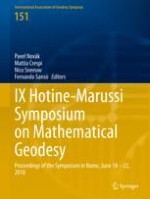This volume gathers the proceedings of the IX Hotine-Marussi Symposium on Mathematical Geodesy, which was held from 18 to 22 June 2018 at the Faculty of Civil and Industrial Engineering, Sapienza University of Rome, Italy. Since 2006, the Hotine-Marussi Symposia series has been produced under the auspices of the Inter-Commission Committee on Theory (ICCT) within the International Association of Geodesy (IAG). The ICCT has organized the last four Hotine-Marussi Symposia, held in Wuhan (2006) and Rome (2009, 2013 and 2018). The overall goal of the ICCT and Hotine-Marussi Symposia has always been to advance geodetic theory, as reflected in the 25 peer-reviewed research articles presented here.
The IX Hotine-Marussi Symposium was divided into 10 topical sessions covering all aspects of geodetic theory including reference frames, gravity field modelling, adjustment theory, atmosphere, time series analysis and advanced numerical methods. In total 118 participants attended the Symposium and delivered 82 oral and 37 poster presentations. During a special session at the Accademia Nazionale deiLincei, the oldest scientific academy in the world, six invited speakers discussed interactions of geodesy with oceanography, glaciology, atmospheric research, mathematics, Earth science and seismology.
